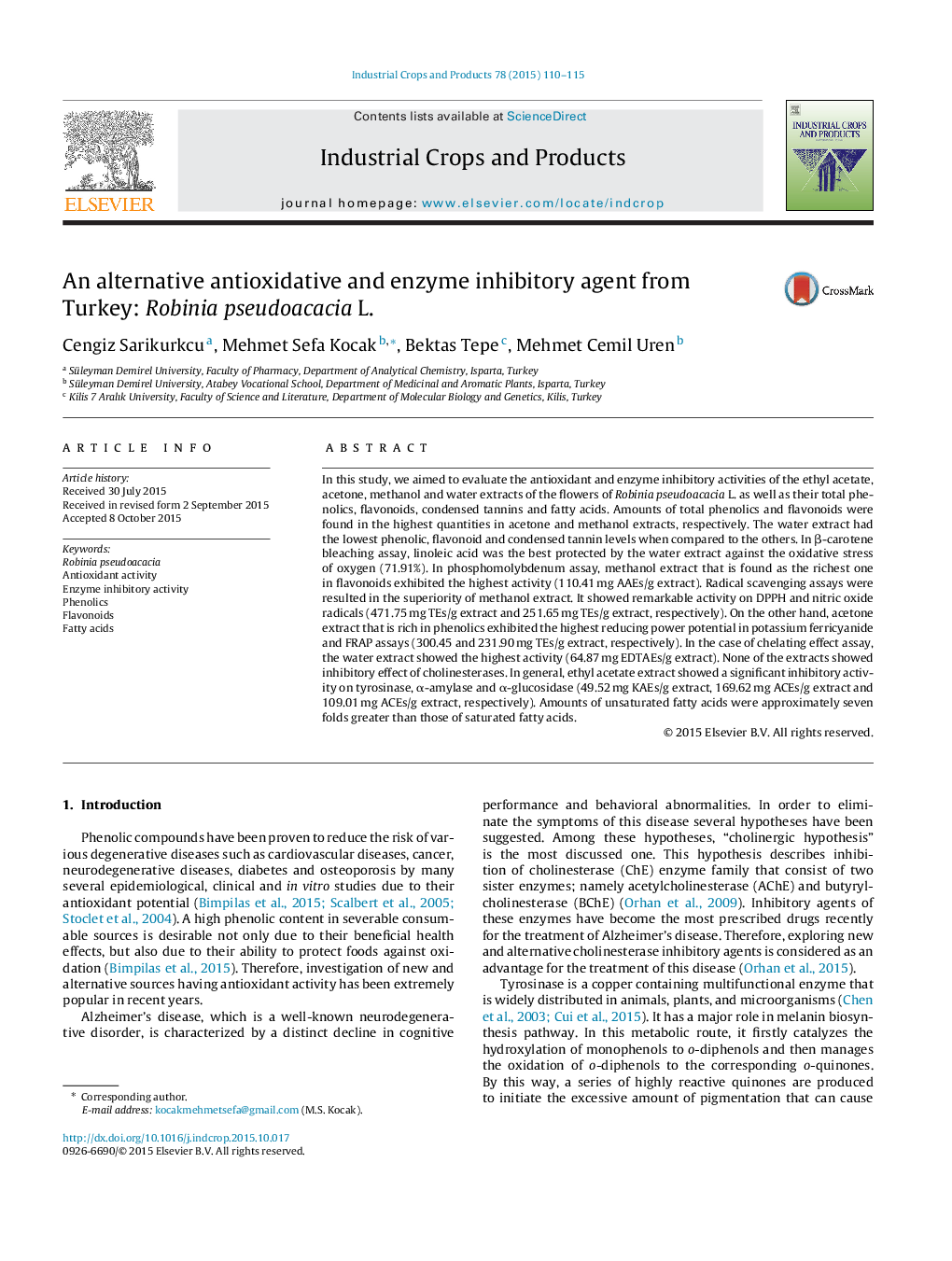| Article ID | Journal | Published Year | Pages | File Type |
|---|---|---|---|---|
| 6375773 | Industrial Crops and Products | 2015 | 6 Pages |
Abstract
In this study, we aimed to evaluate the antioxidant and enzyme inhibitory activities of the ethyl acetate, acetone, methanol and water extracts of the flowers of Robinia pseudoacacia L. as well as their total phenolics, flavonoids, condensed tannins and fatty acids. Amounts of total phenolics and flavonoids were found in the highest quantities in acetone and methanol extracts, respectively. The water extract had the lowest phenolic, flavonoid and condensed tannin levels when compared to the others. In β-carotene bleaching assay, linoleic acid was the best protected by the water extract against the oxidative stress of oxygen (71.91%). In phosphomolybdenum assay, methanol extract that is found as the richest one in flavonoids exhibited the highest activity (110.41 mg AAEs/g extract). Radical scavenging assays were resulted in the superiority of methanol extract. It showed remarkable activity on DPPH and nitric oxide radicals (471.75 mg TEs/g extract and 251.65 mg TEs/g extract, respectively). On the other hand, acetone extract that is rich in phenolics exhibited the highest reducing power potential in potassium ferricyanide and FRAP assays (300.45 and 231.90 mg TEs/g extract, respectively). In the case of chelating effect assay, the water extract showed the highest activity (64.87 mg EDTAEs/g extract). None of the extracts showed inhibitory effect of cholinesterases. In general, ethyl acetate extract showed a significant inhibitory activity on tyrosinase, α-amylase and α-glucosidase (49.52 mg KAEs/g extract, 169.62 mg ACEs/g extract and 109.01 mg ACEs/g extract, respectively). Amounts of unsaturated fatty acids were approximately seven folds greater than those of saturated fatty acids.
Keywords
Related Topics
Life Sciences
Agricultural and Biological Sciences
Agronomy and Crop Science
Authors
Cengiz Sarikurkcu, Mehmet Sefa Kocak, Bektas Tepe, Mehmet Cemil Uren,
